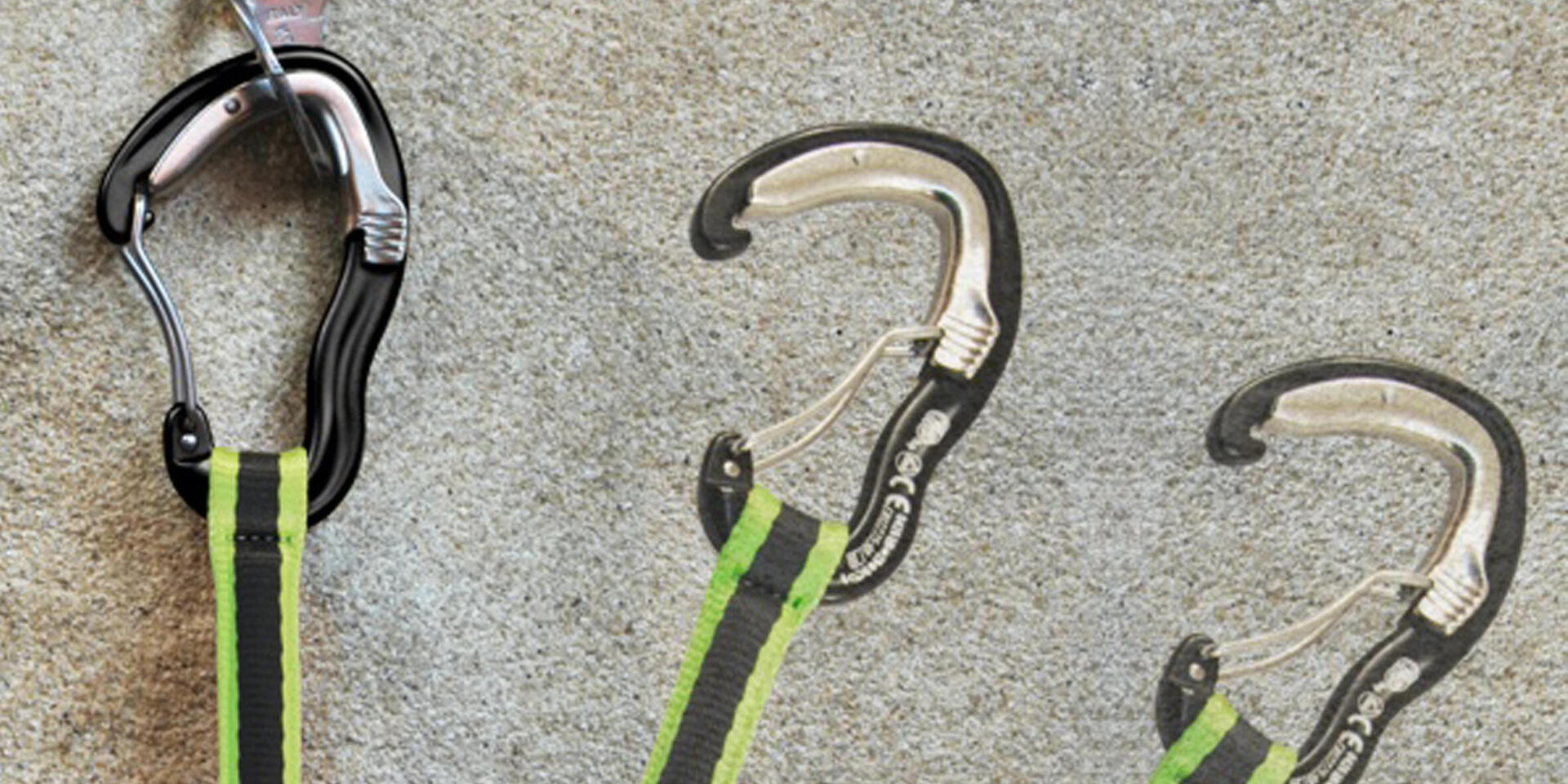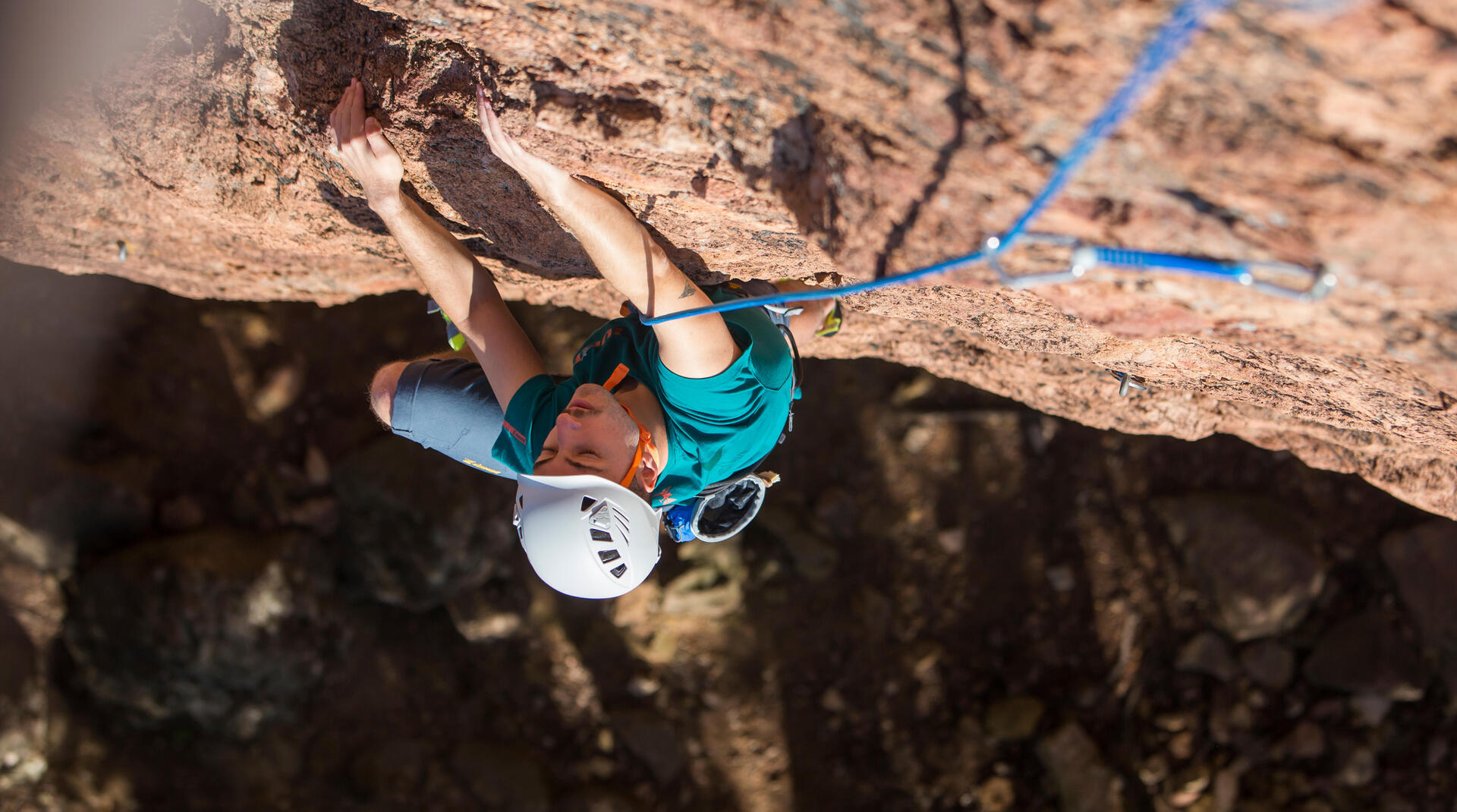What is a quickdraw and what is it used for?
You’ve heard of quickdraws and pairs, but you’re not entirely sure what they are. Let’s look at the definition you’ll find in our glossary of climbing terms. A quickdraw consists of “two carabiners connected by a sling... (they form a pair)”. For lead climbing, pass the first carabiner through the anchoring device set in the rock, and the second through the rope, to make sure you climb safely.
In concrete terms, you need quickdraws to keep you safe during ascent.
Quickdraws have two non-locking carabiners.
These two carabiners are different: one is straight so that it can be attached easily to the anchoring device, the other is bent so that the rope can be passed through.





